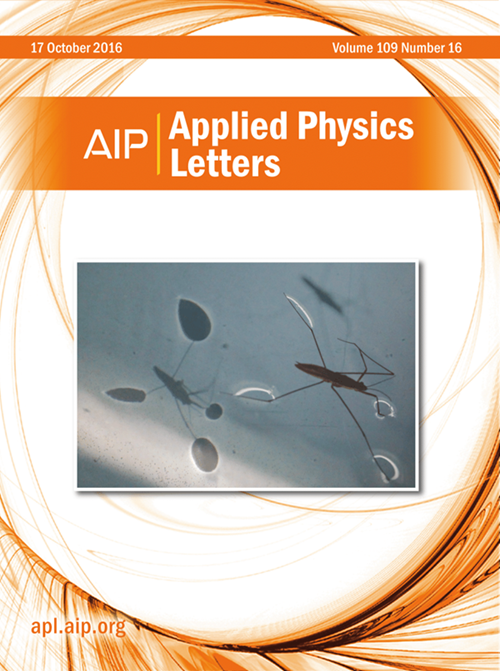Polarization-sensitive short-wave infrared photodetector with high responsivity enabled by PdSe2/Bi2O2Se heterostructure
IF 3.6
2区 物理与天体物理
Q2 PHYSICS, APPLIED
引用次数: 0
Abstract
Short-wave infrared (SWIR) polarized detectors, renowned for their high-resolution imaging and atmospheric penetration capabilities, are pivotal for advancing autonomous navigation, industrial automation, and space communications. The responsivity of commercial InGaAs photodetectors (typically ∼1 A/W at 1550 nm) serves as a key benchmark for high-performance detection at this wavelength. However, achieving higher responsivity and potentially streamlining the fabrication process remain research goals. Herein, we present a PdSe2/Bi2O2Se heterostructure detector that synergistically utilizes the effective separation of photogenerated electron–hole pairs and photogating effect to achieve breakthrough performance in SWIR. A high responsivity of 21 A/W, an external quantum efficiency of 1680%, and a specific detectivity of 5.7 × 109 Jones at 1550 nm were demonstrated. Simultaneously, it achieves a fast response time (131/492 μs) and polarization-sensitive functionality. High-resolution SWIR and polarized light imaging were also demonstrated. These findings outline an approach to developing miniaturized, room-temperature SWIR detectors with high-performance metrics.PdSe2/Bi2O2Se异质结构实现高响应度偏振敏感短波红外光电探测器
短波红外(SWIR)极化探测器以其高分辨率成像和大气穿透能力而闻名,是推进自主导航、工业自动化和空间通信的关键。商用InGaAs光电探测器的响应率(通常在1550 nm处为1 A/W)是该波长下高性能检测的关键基准。然而,实现更高的响应性和潜在的简化制造过程仍然是研究目标。在此,我们提出了一种PdSe2/Bi2O2Se异质结构探测器,它协同利用光生电子-空穴对的有效分离和光控效应来实现在SWIR中的突破性性能。在1550 nm处的高响应率为21 A/W,外量子效率为1680%,比探测率为5.7 × 109 Jones。同时具有快速响应时间(131/492 μs)和极化敏感功能。高分辨率的SWIR和偏振光成像也得到了验证。这些发现概述了一种开发具有高性能指标的小型化室温SWIR探测器的方法。
本文章由计算机程序翻译,如有差异,请以英文原文为准。
求助全文
约1分钟内获得全文
求助全文
来源期刊

Applied Physics Letters
物理-物理:应用
CiteScore
6.40
自引率
10.00%
发文量
1821
审稿时长
1.6 months
期刊介绍:
Applied Physics Letters (APL) features concise, up-to-date reports on significant new findings in applied physics. Emphasizing rapid dissemination of key data and new physical insights, APL offers prompt publication of new experimental and theoretical papers reporting applications of physics phenomena to all branches of science, engineering, and modern technology.
In addition to regular articles, the journal also publishes invited Fast Track, Perspectives, and in-depth Editorials which report on cutting-edge areas in applied physics.
APL Perspectives are forward-looking invited letters which highlight recent developments or discoveries. Emphasis is placed on very recent developments, potentially disruptive technologies, open questions and possible solutions. They also include a mini-roadmap detailing where the community should direct efforts in order for the phenomena to be viable for application and the challenges associated with meeting that performance threshold. Perspectives are characterized by personal viewpoints and opinions of recognized experts in the field.
Fast Track articles are invited original research articles that report results that are particularly novel and important or provide a significant advancement in an emerging field. Because of the urgency and scientific importance of the work, the peer review process is accelerated. If, during the review process, it becomes apparent that the paper does not meet the Fast Track criterion, it is returned to a normal track.
 求助内容:
求助内容: 应助结果提醒方式:
应助结果提醒方式:


